Related Research Articles

Henry Cary was an American engineer and the co-founder of the Applied Physics Corporation, along with George W. Downs and William Miller. The Cary 14 UV-Vis-NIR and the Cary Model 81 Raman Spectrophotometer were particularly important contributions in scientific instrumentation and spectroscopy. Before starting Applied Physics, Cary was employed by Beckman Instruments, where he worked on the design of several instruments including the ubiquitous DU spectrophotometer. Howard Cary was a founder and the first president of the Optical Society of Southern California.
The Williams–Wright Award is an award that honors extraordinary or outstanding work in spectroscopic measurements while working in an industrial setting. The award has been given by the Coblentz Society annually since 1978 with the Awardee being selected by a committee of leading spectroscopists. The Award citations reads, "The Coblentz Society proudly presents the Williams–Wright Award to --- for his/her outstanding contributions to the Field of Industrial Spectroscopy."
The Federation of Analytical Chemistry and Spectroscopy Societies or FACSS is a scientific society incorporated on June 28, 1972, with the goal of promoting research and education in analytical chemistry. The organization combined the many smaller meetings of the individual societies into an annual meeting that includes all of analytical chemistry. The meetings are intended to provide a forum for scientists to address the development of analytical chemistry, chromatography, and spectroscopy.
Ao Prof. Dr. Bernhard Lendl is an Austrian chemist, TU Vienna, Institute of Chemical Technologies and Analytics, the head of the working group on Process Analysis & Vibrational Spectroscopy. Since 2001 he is professor of analytical chemistry, TU Vienna.
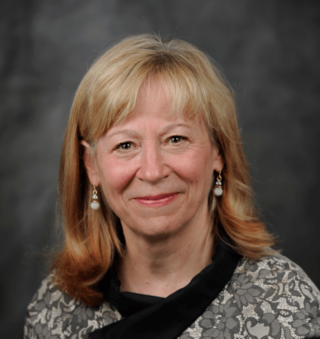
Geraldine Lee Richmond is an American chemist and physical chemist who is serving as the Under Secretary of Energy for Science in the US Department of Energy. Richmond was confirmed to her DOE role by the United States Senate on November 5, 2021. Richmond is the Presidential Chair in Science and Professor of Chemistry at the University of Oregon (UO). She conducts fundamental research to understand the chemistry and physics of complex surfaces and interfaces. These understandings are most relevant to energy production, atmospheric chemistry and remediation of the environment. Throughout her career she has worked to increase the number and success of women scientists in the U.S. and in many developing countries in Africa, Asia and South America. Richmond has served as president of the American Association for the Advancement of Science, and she received the 2013 National Medal of Science.
Yukihiro Ozaki is a Japanese scientist. Kwansei Gakuin University, Department of Chemistry, School of Science and Technology, professor emeritus, Fellow.
Heather Cecile Allen is a research chemist, who leads the Allen Group at Ohio State University. Allen's research focuses on interfacial phenomena, particularly those involving water and air. Her work has broad application ranging from medicine to climate change. She also develops nonlinear optical spectroscopy and microscopy instruments for the examination of interfacial surfaces.
Cynthia Larive is an American scientist and academic administrator serving as the chancellor of University of California, Santa Cruz. Larive's research focuses on nuclear magnetic resonance spectroscopy (NMR) and mass spectrometry. She was previously a professor of chemistry and provost and executive vice chancellor at the University of California, Riverside. She is a fellow of AAAS, IUPAC and ACS, associate editor for the ACS journal Analytical Chemistry and editor of the Analytical Sciences Digital Library.
Mary Agnes Kaiser was an American chemist. She worked at E. I. DuPont de Nemours and Company, where she was the first woman promoted to Senior Research Fellow. A woman scientist of distinction, she was internationally known for her work in environmental analytical chemistry.
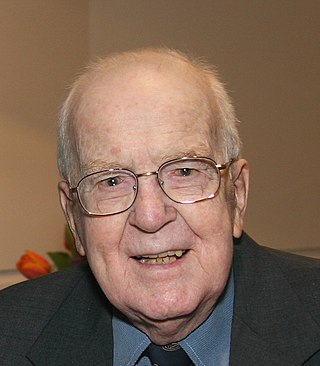
Foil Allan Miller was an American chemist and philatelist best known for his work in infrared and Raman spectroscopy. He was head of the spectroscopy division of the Mellon Institute and later professor and head of the spectroscopy laboratory at the University of Pittsburgh. Among other publications, he co-authored the books Course Notes on the Interpretation of Infrared and Raman Spectra (2004) and A Philatelic Ramble Through Chemistry (1998).
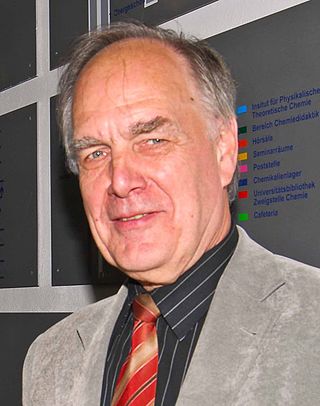
Reiner Salzer is a German chemist and university teacher of Analytical Chemistry at the TU Dresden.
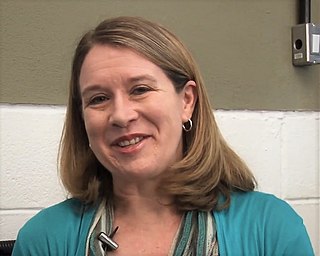
Christy Lynn Haynes is a chemist at the University of Minnesota. She works at the interface of analytical, biological, and nanomaterials chemistry.

Gary M. Hieftje is an analytical chemist, Distinguished Professor, and the Robert & Marjorie Mann Chair of Chemistry at Indiana University in Bloomington, Indiana. Gary M. Hieftje received his A.B. degree at Hope College in Holland, Michigan in 1964, and his PhD from University of Illinois at Urbana–Champaign in 1969. In 1969, he started his career in teaching and research at Indiana University. Hieftje was named a Distinguished Professor in 1985, and entered emeritus status in 2018. As of 2018, Dr. Hieftje has been involved in over 600 publications.

Robin Jon Hawes Clark was a New Zealand-born chemist initially noted for research of transition metal and mixed-valence complexes, and later for the use of Raman spectroscopy in determining the chemical composition of pigments used in artworks.
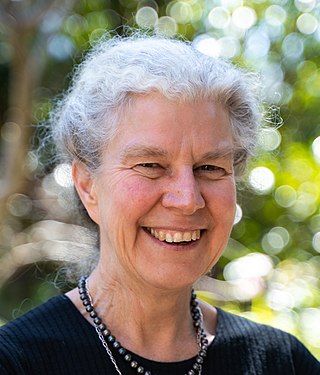
Alison Rodger FRSC FRACI FAA CChem is a Professor of Chemistry at Macquarie University. Her research considers biomacromolecular structures and their characterisation. She is currently developing Raman Linear Difference Spectroscopy and fluorescence detected liner dichroism to understand biomacromolecular structure and interactions with application to the division of bacterial cells.
Karen Jane Faulds is a Scottish academic and Professor of Analytical Chemistry at the University of Strathclyde. She develops surface-enhanced Raman spectroscopy (SERS) for bioanalysis, and has won several awards for her research, including the Coblentz Society Craver Award.
Vibrational Spectroscopy is a bi-monthly peer reviewed scientific journal covering all aspects of Raman spectroscopy, infrared spectroscopy and near infrared spectroscopy. Publication began in December 1990 under the original editors Jeanette G. Grasselli and John van der Maas. The current editor-in-chief is Keith C. Gordon. In addition to research articles and communications, review articles are also published in the journal.

Robin L. Garrell is an American chemist, academic and current President of The Graduate Center, CUNY. Until 2020, Garrell served as Vice Provost for Graduate Education and Dean of Graduate Division at University of California, Los Angeles (UCLA). Prior to this role, Garrell was assistant professor at the University of Pittsburgh from 1984 to 1991, then joined the faculty in the Department of Chemistry and Biochemistry at UCLA, where she became full professor and held a joint appointment in Bioengineering. Garrell assumed her current position at The Graduate Center on August 1, 2020.

Mary Jane Shultz is an American professor and researcher in physical, environmental, materials and surface chemistry at Tufts University. Since 2013, she is also a visiting professor at the Chinese Academy of Sciences.
Janina Kneipp is a German scientist who is Professor of Physical Chemistry Humboldt University of Berlin. Her research considers surface enhanced Raman scattering and plasmonic enhancement in multi-modal micro spectroscopy.
References
- 1 2 3 4 5 6 7 8 9 10 Wayne, Tiffany K. (2011). American Women of Science Since 1900. ABC-CLIO. ISBN 9781598841589.
- 1 2 3 4 5 6 7 8 9 10 Shearer, Benjamin F.; Shearer, Barbara Smith (1997-01-01). Notable Women in the Physical Sciences: A Biographical Dictionary . Greenwood Press. ISBN 9780313293030.
jeanette grasselli brown.
- 1 2 3 4 5 "Cleveland International Hall of Fame 2010". www.clevelandpeople.com. Retrieved 2018-04-01.
- 1 2 3 4 5 6 7 8 9 "Jeanette Grasselli Brown". www.clevelandwomen.com. Retrieved 2018-04-01.
- ↑ Oakes, Elizabeth H. (2007). Encyclopedia of World Scientists. Infobase Publishing. ISBN 9781438118826.
- ↑ "Hungarian roots run deep for scientist Jeanette Grasselli Brown: My Cleveland with Sarah Crump". cleveland.com. Retrieved 2018-04-02.
- 1 2 3 4 "Jeanette Grasselli Brown – 2010 – Cleveland International Hall of Fame". Cleveland International Hall of Fame. Retrieved 2018-04-01.
- 1 2 3 Jones., Royster, Jacqueline (2003). Profiles of Ohio women, 1803–2003. Athens: Ohio University Press. ISBN 0821415085. OCLC 52775181.
- ↑ "Jeanette G. Grasselli Brown Undergraduate Research Award". www.clevelandwomen.com. Archived from the original on 2018-09-13. Retrieved 2018-04-01.
- ↑ "Infrared Spectroscopy". Chemistry LibreTexts. 2013-10-02. Retrieved 2018-04-18.
- 1 2 3 4 5 6 "Ohio University Outlook". www.ohio.edu. Archived from the original on 2020-02-12. Retrieved 2018-04-01.
- 1 2 "OHIO alumna receives prestigious award from Hungarian President Pál Schmitt". Ohio University. Retrieved 2018-04-01.
- ↑ "Medalists Database". www.neco.org. Archived from the original on 2018-09-13. Retrieved 2018-04-01.
- ↑ "A&S Alum Donates Her Papers to Archives and Special Collections". Ohio University. November 1, 2013. Retrieved 12 September 2018.
- ↑ Grasselli, Jeanette G.; Ritchey, William M.; Company, Chemical Rubber (1975). CRC atlas of spectral data and physical constants for organic compounds. CRC Press. ISBN 9780878193172.
- ↑ Brame, Edward Grant; Grasselli, Jeanette G. (1976). Infrared and Raman Spectroscopy. Marcel Dekker. ISBN 9780824763923.
- ↑ Grasselli, Jeanette G.; Snavely, Marcia K.; Bulkin, Bernard J. (1981). Chemical applications of Raman spectroscopy . Wiley. ISBN 9780471085416.
jeanette grasselli brown books.
- ↑ Grasselli, Jeanette G. (1983). The Analytical approach. American Chemical Soc. ISBN 9780841207530.
- ↑ Grasselli, Jeanette G.; Cameron, David G.; Canada, National Research Council; Society, Coblentz (1985). 1985 International Conference on Fourier and Computerized Infrared Spectroscopy: June 24–28, 1985, Carleton University, Ottawa, Ontario, Canada. SPIE—the International Society for Optical Engineering. ISBN 9780892525881.
- ↑ Weast, Robert C.; Grasselli, Jeanette G.; Lide, David R. (January 1992). Handbook of data on organic compounds. CRC Press. ISBN 9780849304439.
- ↑ "Wilfred R. and Ann Lee Konneker Award for Distinguished and Enduring Service". www.ohio.edu. Archived from the original on 2018-05-20. Retrieved 2018-04-04.
- ↑ Brimfield, Colin. "OneCommunity to Present Jeanette Grasselli Brown with Lifetime Ambassador's Award – OneCommunity". www.onecommunity.org. Archived from the original on 2018-07-05. Retrieved 2018-04-04.